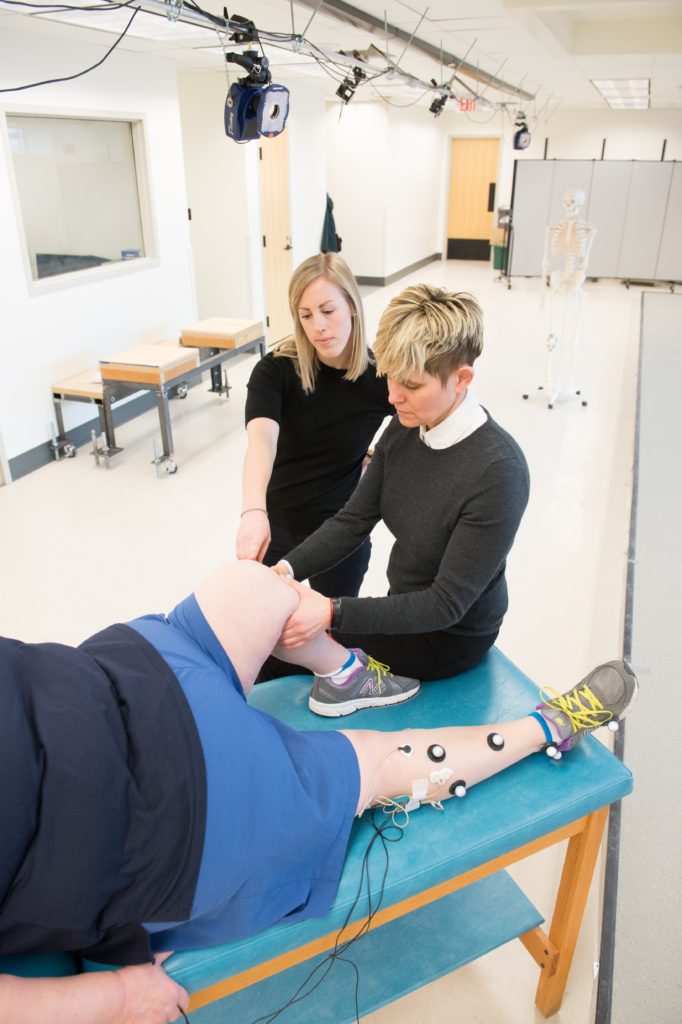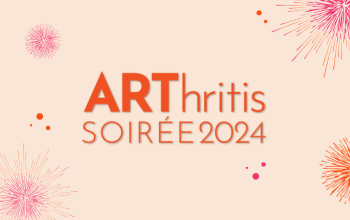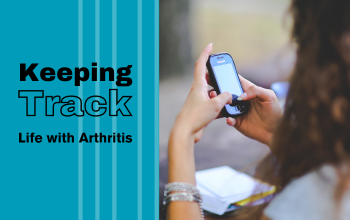What? I can get osteoarthritis in my thirties!?
Youth Sports Injuries and Osteoarthritis with Dr. Jackie Whittaker
Dr. Jackie Whittaker recently joined Arthritis Research Canada as a Research Scientist of Musculoskeletal Rehabilitation. Her work focuses on the connection between youth sports injuries and early onset osteoarthritis, as well as OA prevention. Millions of Canadians currently live with the pain and disability of this disease and it is estimated that 12 million Canadians will have osteoarthritis by 2040. We sat down with Dr. Whittaker to learn more about her exciting field of research.
 What are your primary research interests?
What are your primary research interests?
My research is focused on trying to reduce risk factors for osteoarthritis after a youth sport knee injury. I want to increase awareness in young people who hurt their knees playing sports. I want them to know they are at risk for developing OA, but also that they can take steps to prevent it.
Soccer is the highest participatory sport in Canada. More kids play soccer than hockey. It’s a sport with a high injury risk too. We do have very good injury prevention programs – like the 11+ Injury Prevention Program, for example. We know it can reduce knee injuries by up to 50 per cent. What we don’t know is what can someone do after an injury to minimize their risk for developing OA?
What are some of the factors that contribute to osteoarthritis?
We know obesity and muscle weaknesses are risk factors. So, in theory, keeping muscles strong should help. But we also know that kids who injure themselves gain more weight and lose muscle. So the biggest message is you have to stay active after an injury. The red flag isn’t when you have swelling and pain. It’s when you are becoming less and less active because of your knee.
The last thing you want someone to do is stop sport or physical activities altogether. But there can be challenges. If you are high-level, you might not want to play at the recreation level. In many cases, people need help to figure out what will fulfill the need for activity and competition that their sport used to fill. As medical professionals, we must determine how we can get this information to patients because many of them do not seek medical attention once their injury has healed, even though they have a risk for OA.
But isn’t osteoarthritis a disease that only older people get?
No, the reality is that we know people in their thirties have OA. And often people who have it at a young age were athletes or played a sport. Some of our national level athletes have osteoarthritis.
What can be done to prevent people from getting OA after a sports injury?
The big questions is, “How do we get younger people to prioritize long-term consequences and outcomes?” If you tear your ACL, you will see a physio, sport doc, and an orthopedic surgeon. They will likely discuss whether a reconstruction surgery should be done. Whether you have the surgery, won’t determine if you get OA or not. So you could say at that point there should be a discussion about the increased risk of OA. Someone in the healthcare system needs to speak to patients about this, but it can’t be all doom and gloom. There is a risk, but OA isn’t inevitable. It is also important to understand that you can still play sports without an ACL and if you have knee osteoarthritis.
Who would you see taking on this role in the healthcare system?
I’m not sure that sports docs and other specialists have these conversations with patients. They are often strapped for time. This might fall to physiotherapists. In the first year after an injury, we want to return a patient to function. That is the focus. Then we discharge them and don’t see them again until they start getting OA symptoms in their thirties and forties. The challenge is how do we reach these people between injury and the first signs of the disease? Patients need to know not to make a decision to stop exercising because they think there is no other alternative. There need to be changes on both sides. Patients need to know the first red flag that they need help is that they are becoming less physically active. Depression from not being able to compete at the same level can be another sign. But our healthcare system isn’t currently set up to intervene after a patient has returned to function.
What have been some of the most interesting findings that have come out of your research on the connection between youth sports injuries and the development of OA?
We found that 20 per cent of people between the ages of 15 and 26, who had a knee injury before the age of 18, have early osteoarthritis. They have weaker muscles. They are less active. They have gained more fat mass. And these factors increase the risk for osteoarthritis. These people are young and in their twenties and some will have to live until 80 or 90 managing knee osteoarthritis.
The additional piece is that if you are someone who has experienced a sports injury and you are trying to understand what you can do to reduce the risk of OA, it will come back to having strong leg muscles, being physically active and not gaining a lot of fat tissue. The physical activity part might be challenging when their knees flare up. But if a person is having difficulty being active it’s very important that they not just assume they should stop being active. Many will say, “I can’t run anymore because I tore my ACL.” But we know that if we don’t weight bear through our cartilage, it doesn’t stay strong. People need to load their joints so those joints don’t get upset.
Can you tell us about any new research that is on the horizon?
As we intervene and try to come up with treatments to prevent OA, it’s not just about treating the physical aspect. We also have to consider psychological and social aspects. If a patient has fears around re-injury, if they feel they have lost their identity as an athlete…this will probably have more of an impact on their life than swelling and weak muscles. This is an area of research that my group is working on.
A lot of people who experience sports injuries in their youth play team sports and suddenly they don’t see their team members anymore because they can’t train. It’s really important that patients be engaged in decisions. They need to feel that they have autonomy and not like a physiotherapist, surgeon, and parents are making decisions for them. Young kids often feel like they lack control over what happens. There is more to humans than their muscles and joints. We need to consider the social piece. You can’t keep someone away from the thing that they identify with or their peer group and expect them to thrive.
What are you most looking forward to about working at Arthritis Research Canada?
I’m excited about bringing a new way of looking at osteoarthritis to Arthritis Research Canada – especially prevention. And I look forward to collaborating with, and learning from, amazing scientists at such a well-established institute for arthritis research.






 What are your primary research interests?
What are your primary research interests?



















































